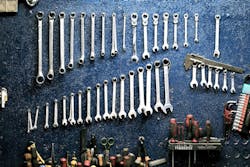Low Oil Means High Times, New Opportunities for the New Year
“In our survey of owners of about 1 million vehicles stretching back 10 years, significant numbers of consumers have to add a quart of oil to their engines as frequently as every month.
“Automakers are facing a dilemma: They want to reduce ownership costs and the ecological impact of their cars. But wait too long to change your oil and it can foul — turning to sludge and damaging your engine.
“Some consumers we followed up with told us they would not have bought their oil-burning cars had they known they would be checking their oil so often. A recent Consumer Reports’ national survey of 542 American owners of a 2000 to 2016 model-year vehicle showed that 39 percent either never check their oil or only have it checked when taken in for service.”
Consumer Reports, August 2015
We all see it. Your customers are coming in with lower and lower oil levels. Sometimes, dangerously low. The next two columns will focus on the why, what it means for them and you and what should be done about it. Spoiler alert: The last is my favorite part because it involves four product opportunities.
When we look at the why, one area deserves no blame: the oil itself. Today’s oils are more sophisticated than ever, performing many duties, protecting the engine and helping economy and performance. However, it can only do its jobs when it is in the crankcase. Sure, the additive package has a lifespan of effectiveness, but low oil levels increase all of the risks to the consumer.
We can argue about what’s normal oil consumption, but low is low. So what’s happening? What contributes to this situation?
Engine design: Some engines consume oil by design from day one. The consumption can be as high as 1.7 quarts per 1,000 miles.
· Low-tension piston rings: These have helped fuel economy since their introduction more than 12 years ago but lead to higher fuel dilution in the crankcase and more oil in the combustion chamber.
· Gasoline direct injection: These systems generate much more pressure in the combustion chamber leading to more fuel dilution in crankcase.
Driving style: RPM affects oil consumption. The higher your usual RPM is, the more oil will be consumed.
Seal and gasket condition: The more worn they are, the more oil will be consumed.
Higher-than-normal engine temperature: The hotter your engine runs, the thinner your oil will be. Once again, it will be simpler for a thin oil to reach the combustion chamber and get mixed and burned with the fuel.
Soot and sludge: The clogging of different engine parts.
Fuel blowby: Excessive fuel contamination of the oil.
Extended drain intervals: Longer intervals plus oil consumption equals dangerously low levels
What Consumer Reports and countless other web authorities are pointing out is the hypocrisy of the original equipment (OE) extended drain intervals and the hidden costs. Costs ultimately born by your customers in higher operating costs, expensive repairs and, ultimately, lower vehicle life. A cynic might see this as self interest on the OE part, more repairs and more car sales. At the end of the day, it just doesn’t matter; your customers have a big need, and you can help.
For a preview of next month, contact me. I also have a consumer wall chart available in February. Happy New Year!
